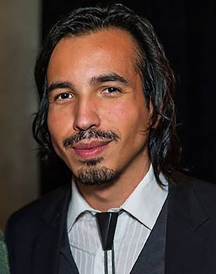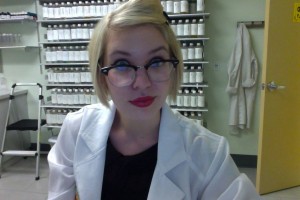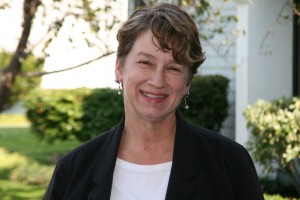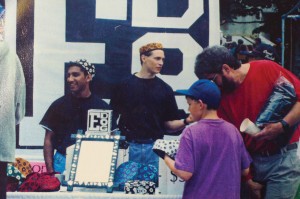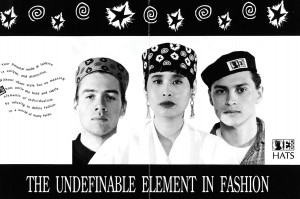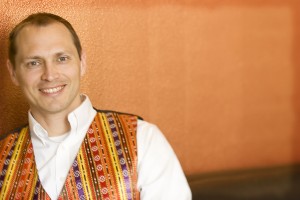Vinson Doyle ’04 recalls exactly when he realized he was going to be a Mycologist. Until winter 2004, just two quarters before graduation, Doyle had studied Botany and Organic Chemistry, but Fungal Kingdom was the “class that changed my life”. Doyle went on to earn a Ph.D at the City University of New York (CUNY) in 2012, and is already on a tenure track at Louisiana State University as an Assistant Professor of Mycology with a research emphasis on the biodiversity of fungi. Continue reading
Category Archives: Current Highlights
Finalists Announced for President Position at The Evergreen State College
As part of a national presidential search that has generated nearly a hundred applicants, the Board of Trustees of The Evergreen State College announced this week that it has selected four finalists for on-campus interviews in January and February. They include: Continue reading
Foundation Launches Association With Ambitious Goals
A new organization was launched earlier this month to promote the long term success of The Evergreen State College, its students and alumni. The Associated Alumni and Friends of Evergreen is part of The Evergreen State College Foundation, a 501c3 nonprofit organization dedicated to building an outstanding future for Evergreen. Continue reading
Adam Fletcher ’02 Pioneers Youth Policy in Brazil
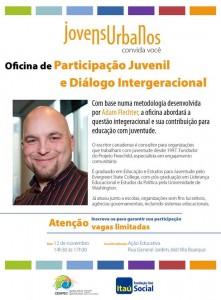
Center for Studies and Research in Education, Culture and Community Action (CENPEC) advertises November conference
Adam Fletcher ’02 is a consultant, author, and public speaker on topics including youth engagement, education policy, and community development. As a consultant, Fletcher has gotten used to “posing questions and challenging norms to which [he doesn’t] get to see outcomes.” But for eight days in November 2014, at a conference organized by the Center for Studies and Research in Education, Culture and Community Action (CENPEC), held in São Paulo, Brazil, his experience shattered that narrative. This is the story of how Adam Fletcher, a man who started his career as a youth worker at age 14, and at times lived homeless while growing up in Alberta, Canada and later in South Dakota, Montana and Nebraska, came to inspire and inform the creation of Brazil’s youth engagement programs. Continue reading
2014 Arts Innovator Award to Rodrigo Valenzuela ’10
Video artist and photographer Rodrigo Valenzuela ’10 already held a Bachelor’s Degree in Photography before moving to Boston from Chile, where his family still lives today. Valenzuela chose Evergreen, after several years working in the United States, to study philosophy in an uninhibited environment. Valenzuela credits his Evergreen experience for learning to have a better dialogue with the material and the subject in his art.
Taylor Rose Nations ’12: Greener on Mars?
Taylor Rose Nations ’12 is one of 663 finalists in consideration to colonize Mars. The search, which began in 2013, started with over 200,000 applicants. The mission, which aims to establish a permanent human settlement on Mars, is called Mars One. Crews of four will depart every two years, starting in 2024. Continue reading
Foster Teens Find Ally in Ann Whiting ‘85
Ann Whiting ’85 has been a Child Welfare Worker for four years, serving youth between ages 15 and 21 in Alameda County, California. While Ann works for the county, much of the job involves coordinating with local non-profit care providers, and, of course, the legal system. Just two days before Ann was back on Evergreen’s Olympia campus for Return to Evergreen, Continue reading
Recapping an unforgettable Return to Evergreen
Gallery
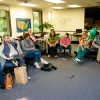
This gallery contains 62 photos.
Thanks to the over 250 alumni and friends in attendance, over 40 alumni and faculty facilitators, and incredible collaboration amongst the campus community, Return to Evergreen on October 18, 2014 was a great success. Until next time, enjoy some of … Continue reading
Eben Greene ’91, Designing For Change
Eben Greene ’91 quickly became a familiar face at Evergreen. Perhaps most famous for his South African pillbox inspired hats and t-shirts, Greene started his first business, E-Dog Clothing, as a student. While E-Dog didn’t grow far beyond Evergreen, Eben Greene has owned his own business ever since.
Eben grew up in Yellow Springs, Ohio, and came to appreciate the reformist ideas of Horace Mann, the first president of local Antioch College. Greene describes Mann’s philosophy as a guiding factor in deciding to apply an environmental scholarship to attend Evergreen. Greene credits his mother’s health and wellness business in Ohio as a motivating factor in studying promotion. It may also have been his grandfather, the commercial artist responsible for the Yellow Pages “Let Your Fingers Do The Walking,” who was his first introduction to the power of graphic design.
Right away, Greene got involved with Earth Day and balanced courses like Health: Individual & Community with an Individual Learning Contact to learn how to manage an art design business. After graduating, Eben leased space for E-Studio, the name of his first marketing and graphic design business. Moving away from merchandise to graphic design, Greene leased a space in the iconic Security Building in downtown Olympia, across from the Harlequin Theater. Green participated in traditions like Arts Walk, and used the space above Mix96, one of Greene’s first clients and at the time an upstart effort by two Evergreen graduates. It was during Arts Walk that he met fellow alumni Pablo Shugurensky, who he credits for getting his first booth at Seattle arts and music festival Bumpershoot; Shuguresnky was also a collaborator on a line of 24 greeting cards. Greene became entrenched in the Olympia community, and many of the clients and the network he created in three years of business in Olympia have stayed with him to this day.
Eben’s career went in a different direction three years after graduating during a trip to Oregon’s Breitenbush Hot Springs, where he met a representative from Nike, who got his foot in the door at Brooks Sports in Seattle. Eben developed a strong (and enduring) portfolio at Brooks Sports, creating logos still in use today. But it was satisfaction from working with his independent clients, including ones from Olympia, that prompted the decision to focus on his own business and leave Brooks Sports in 1996.
Green’s business has changed names a few times over the years. Just recently, Eben Design became United Creations, which Greene describes as more than a marketing and graphic design company. Instead, he describes it as a change agency, uniting brand culture to help companies market smarter. Greene’s philosophy “Be You More” is a way for people and organizations to more fully realize their vision, voice, and values. Greene has been doing organizational development work as part of the branding process for years, and perceives that’s where other companies are headed.
Despite having worked with clients including Washington State Ferries, Bartell Drugs, AT&T, Google, Microsoft, Haggen, and the City of Olympia, Greene cites the 2008 recession as a time that all designers struggled as companies cut back. Things are picking up again for United Creations, but that doesn’t mean Greene will expand his company. Instead, the vision for United Creations is to build relationships and work with socially and environmentally conscious companies and organizations.
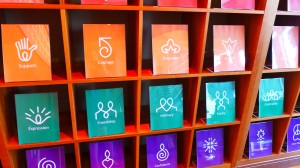 Eben sees the power of leveraging culture to build brands for his clients. To that end, his company will launch their own “positive brand for change” in the coming year. One of the concepts Greene is most excited about is one he conceived soon after he graduated Evergreen. He credits a financial planning class providing the necessary boredom to start thinking about the symbols people identify with, like the Peace Sign. Ever since, Greene has been motivated to develop symbols for people’s values. United Creations has developed forty two of what they call ValYou symbols, which will be first displayed at this year’s Bumpershoot festival. Which do you connect with most? Soon, Greene predicts that will be a common question.
Eben sees the power of leveraging culture to build brands for his clients. To that end, his company will launch their own “positive brand for change” in the coming year. One of the concepts Greene is most excited about is one he conceived soon after he graduated Evergreen. He credits a financial planning class providing the necessary boredom to start thinking about the symbols people identify with, like the Peace Sign. Ever since, Greene has been motivated to develop symbols for people’s values. United Creations has developed forty two of what they call ValYou symbols, which will be first displayed at this year’s Bumpershoot festival. Which do you connect with most? Soon, Greene predicts that will be a common question.
Seth Frankel ’93 Designing Museums for Peace Around the World
Few stories are harder than the stories Seth Frankel ’93 designs and develops into exhibitions for museums across the country. As principal of his Colorado-based exhibition design firm, Studio Tectonic, he’s developed wide ranging exhibits. He’s created exhibits on watersheds, paleontology and beer (the beer and paleo exhibits aren’t the same, by the way, but he claims eyewitness account that there’s plenty of beer in paleo field camps).
But of the exhibits he develops, few are as challenging as the telling of human atrocity, genocide and healing. Some tell of recent events, such as his work creating the national Sierra Leone Peace Museum that wrestles with the nearly unspeakable genocide ending in 2002. Others are centuries old, such as the Civil War era Sand Creek Massacre of Arapaho and Cheyenne peoples in the Colorado Territory.
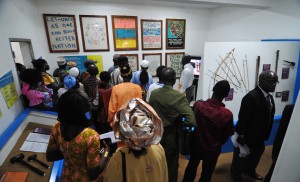
At the Sierra Leone Peace Museum, visitors look at the causes of the nation’s 1991 to 2002 civil war and how they connect to healing, rebuilding and promoting a continued peace.
“I strive to tell a balanced story. I use artifacts, media, visuals and narrative to provide the complexity of these human events in ways that the visitor can’t turn away from. It’s easy to dehumanize history’s perpetrators, but ultimately if we allow the richness of experience to grow in the visitor’s mind they’re engaged – not as observers but as partners in the humanity.”, says Seth.
In his twenty years of working with museums he’s seen significant growth in the relationship between storyteller and visitor. “Museums of the past, and many of our still standing older exhibits, have great objects and may be quite successful in disseminating facts. Who doesn’t enjoy seeing wonderful, powerful things?”, he asks. “But facts are quickly forgotten or replaced with new details. Building experiences, and our participation in creating and sharing these experiences, are very much at the center of the new museumship.”
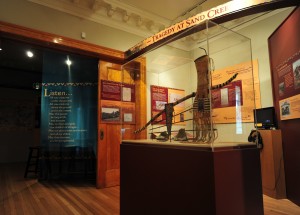
Chief Niwot ~ Legend and Legacy exhibit the Boulder History Museum in Colorado challenges visitors to look at past atrocities against native peoples and asks them to consider their place today in relationship to this past.
Seth has observed changes also in the expectations of the public. Many of his exhibitions feature creating learning environments in which the visitor can both leave their mark for other exhibit goers and to the broader world through social media. In thinking about the importance of museums for promoting peace, Seth takes this work very personally.
“We commemorate and tell of horrible pasts…hopefully arriving at overcoming these horrors to arrive at decency and celebration of human compassion. Yet, we’re seemingly programmed to look for a happy ending. But peace museums aren’t about an ending…they’re about building the capacity to envision a future. One that can only exist through connecting ourselves to the breadth and range of the human condition. Our good. Our bad. Our forgotten. Our remembered.”
Want to see Seth’s work in person? Check out the list of exhibitions by Studio Tectonic and see if there’s one in your area.


